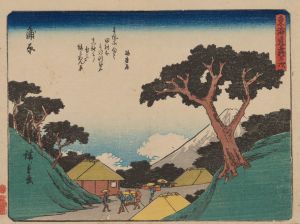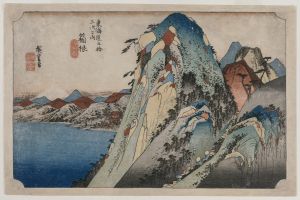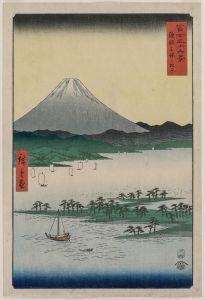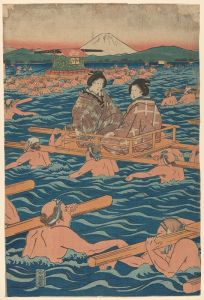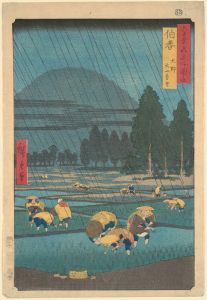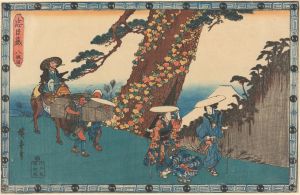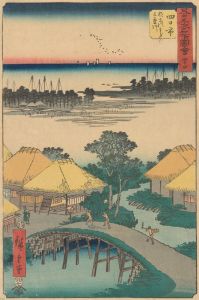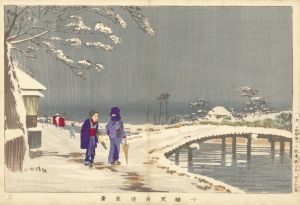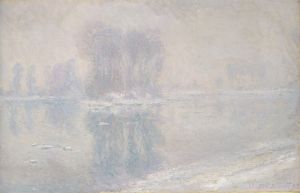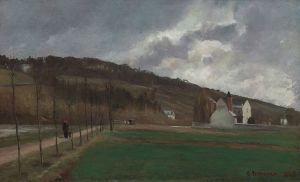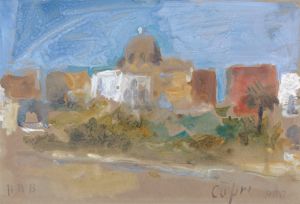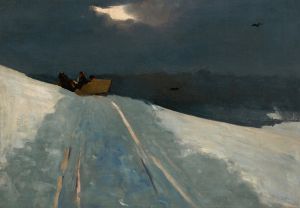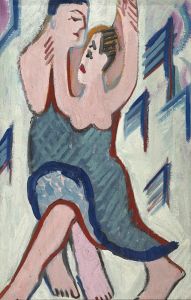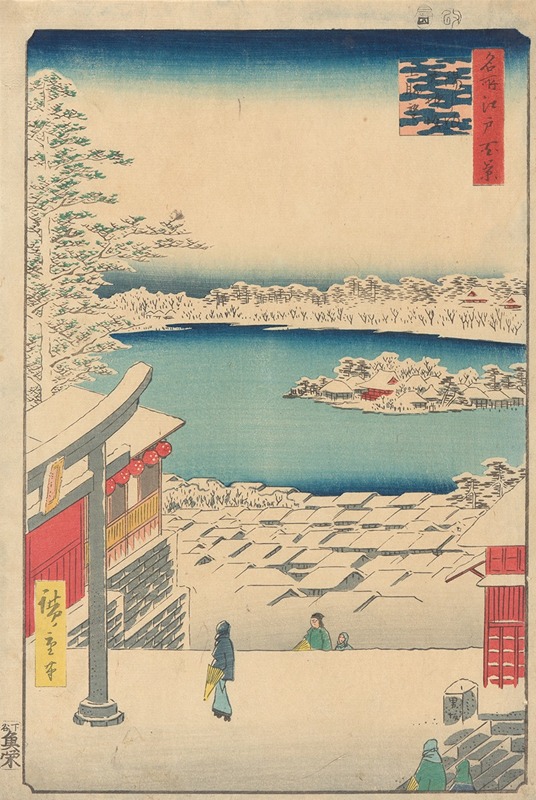
Islet in the Snow
A hand-painted replica of Andō Hiroshige’s masterpiece Islet in the Snow, meticulously crafted by professional artists to capture the true essence of the original. Each piece is created with museum-quality canvas and rare mineral pigments, carefully painted by experienced artists with delicate brushstrokes and rich, layered colors to perfectly recreate the texture of the original artwork. Unlike machine-printed reproductions, this hand-painted version brings the painting to life, infused with the artist’s emotions and skill in every stroke. Whether for personal collection or home decoration, it instantly elevates the artistic atmosphere of any space.
Islet in the Snow is a woodblock print by the renowned Japanese ukiyo-e artist Andō Hiroshige. Hiroshige, born in 1797 and active until his death in 1858, is celebrated for his landscape prints and his ability to capture the transient beauty of nature. He was a prominent figure of the Edo period, a time when the ukiyo-e genre flourished in Japan, and his works have had a lasting influence on both Japanese and Western art.
Islet in the Snow is part of Hiroshige's series "One Hundred Famous Views of Edo" (Meisho Edo Hyakkei), which was published between 1856 and 1858. This series is one of Hiroshige's most famous and ambitious projects, consisting of 119 prints that depict various scenes around Edo, now known as Tokyo. The series captures the essence of Edo's landscapes, seasons, and daily life, showcasing Hiroshige's keen observation and masterful use of color and composition.
The print Islet in the Snow is a quintessential example of Hiroshige's ability to convey the serene beauty of a winter scene. It depicts a small islet blanketed in snow, surrounded by calm waters. The composition is marked by its simplicity and elegance, with the snow-covered islet providing a stark contrast to the surrounding water and sky. Hiroshige's use of color is subtle yet effective, with shades of blue and white dominating the scene, evoking a sense of tranquility and stillness.
Hiroshige's technique in creating this print involved the traditional ukiyo-e woodblock printing process, which required the collaboration of the artist, a carver, and a printer. The artist would first create a detailed sketch, which was then transferred onto a wooden block. The carver would meticulously carve the design into the block, and the printer would apply ink and press the block onto paper to produce the final print. This collaborative process was essential to the production of ukiyo-e prints and allowed for the creation of multiple copies of a single design.
The "One Hundred Famous Views of Edo" series, including Islet in the Snow, was highly popular in its time and remains influential today. Hiroshige's work had a significant impact on Western artists in the late 19th century, particularly the Impressionists and Post-Impressionists, who admired his innovative compositions and use of color. Artists such as Vincent van Gogh and Claude Monet were inspired by Hiroshige's prints, incorporating elements of his style into their own work.
Islet in the Snow, like many of Hiroshige's prints, captures a moment of natural beauty with a sense of harmony and balance. It reflects the Japanese aesthetic principles of simplicity and appreciation for the fleeting nature of life, themes that are central to much of Hiroshige's work. Today, Hiroshige's prints are celebrated for their artistic and historical significance, offering a glimpse into the landscapes and culture of Edo-period Japan.





